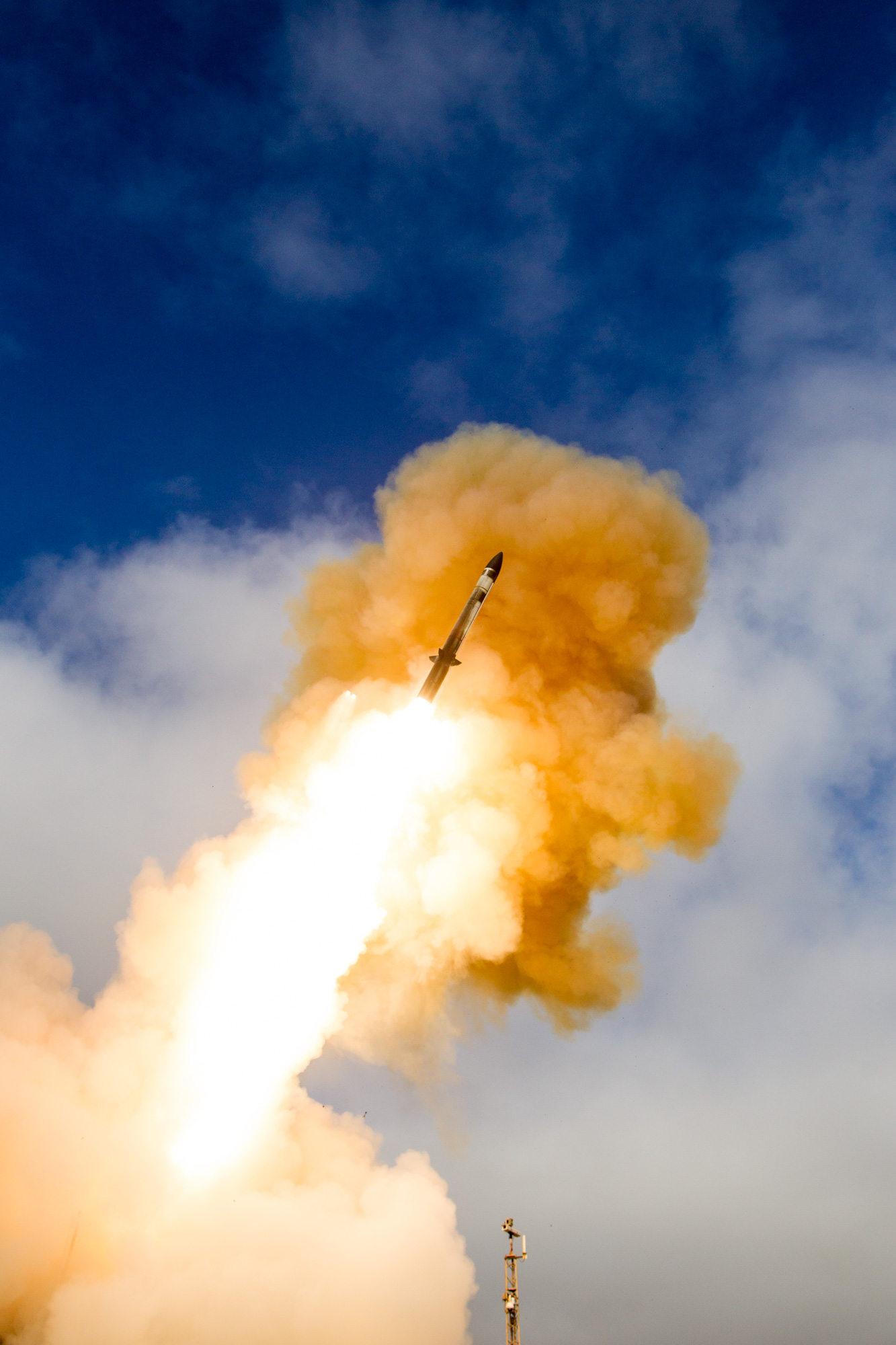You don't need Aegis for a CEC type of capability. It's not a built-in aspect of the Aegis Combat System or its supporting elements, it's a learned capability that the USN and USAF are practicing using existing capabilities and linking them into a singular capability.
Russia used to do the same thing with their Relay system. A submarine link this Juliet Class would launch a missile, without the submarine being able to detect or see the target.
And orbiting aircraft, often times the a TU-95 derivative would pick up the missile and provide updates for course correction.
These course updates could come from the Bear itself if it was able to ID and track the target, but more commonly it too would be at standoff ranges and have course updates fed by additional maritime recon aircraft, satellites, submarines or surface ships.
The final result would be this:
But the Bear, the Juliet or its quartet of missiles, the surface ships, supporting subsurface or orbital platforms weren't purpose built to guide each other, they achieved this relay capability, a precursor to OTH CEC engagements by simply being able to talk with one another. Using up and downlinks that would feed each other targeting updates.
Aegis and its supporting elements like SM-6, E-2D, Virginia class submarines or specialized remote sensing satellites - among many more - are able to talk to each other, much the same way Link16 allows the USAF to talk with all its aircraft, not just a balkanized system were only F-16s can talk to F-16s.
MF-STARs should be able to do that too, if the IN is built right its ships, aircraft and submarines should be able to communicate with each other. After that, if they already don't, adding the capability to talk with and vector missiles shouldn't be too hard.
You don't need Aegis to implement a CEC type of engagement capability, you just need to be able to talk with supporting elements and most importantly practice it.
And this is part of the reason the US wont sell it, or would sell you a nerfed version that doesn't represent the current baseline. We aren't selling you sh*t if you're intention is to compare if with your other control platforms.




 Among swords I am a big fan of Samurai Katana
Among swords I am a big fan of Samurai Katana 





 .
.

 .
.
 BARAK 8 is the LRSAM of IN. It is itself SAM, how will it combine in a system. Please understand at least basic work of equipment before explaining things which might be way of the track.
BARAK 8 is the LRSAM of IN. It is itself SAM, how will it combine in a system. Please understand at least basic work of equipment before explaining things which might be way of the track. 




